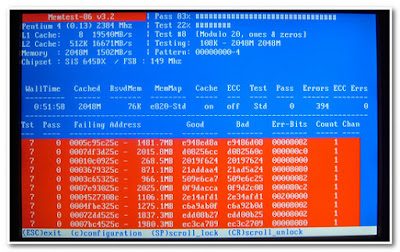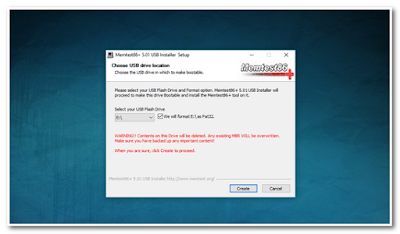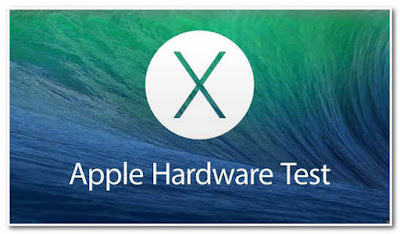Sudden reboots, programs that fail randomly, windows that close apropos or blue screen. The problems caused by the malfunction of the memory modules RAM can be as generic and random that sometimes costs relate RAM itself. Although other failures are much less subtle, and you can find screens reporting that the memory system fails.
Whether because you are convinced that the RAM goes wrong, or because you are simply by detecting small glitches and want to discard it by your memory modules to give with error, it will come in handy to have on hand programs to diagnose the state of your RAM . Today we will show you some that you can use in Windows, Mac OS X or Linux.
Quiet, because if you're using Mac OS X also have several options to determine if RAM is the cause of these annoying errors giving your software. Two of the main options are the internal Apple Hardware Test tool and some third-party programs like veteran Rember.
And of course, the open source tool Memtest has also found its way to Mac OS X. Memtest The application is automatically installed in the / applicatons / memtest, and to execute will have to restart your Mac while holding down the Command-S key . a console It will run automatically, and it will only have to write the / Applications / memtest / memtest all NUMBER -1 command.
Linux also have another option
Once located the problem touches change RAM. In this video from Engadget TV in which we are taught to assemble a PC by saving money pieces you will see how you insert or remove your RAM to the motherboard. Also some other tips you have to keep in mind when changing parts of your computer.
But if you are going to be unhappy having to change the RAM and want to do a deeper physical analysis or try to solve the problems, some companies offer professional solutions pay for it. Some of them are physical or Memory Testers analyzers and other solutions that can become quite expensive as PC-Doctor, PC Diagnostics or Ultra X. Several of these tools are also used to analyze other physical components.
Whether because you are convinced that the RAM goes wrong, or because you are simply by detecting small glitches and want to discard it by your memory modules to give with error, it will come in handy to have on hand programs to diagnose the state of your RAM . Today we will show you some that you can use in Windows, Mac OS X or Linux.
Windows Memory Diagnostic
Windows takes time taking a simple but complete tool to analyze your RAM called Windows Memory Diagnostic. It may not be as thorough as other alternatives, but at least it will serve to give a first step before Liard to downloading software, and all you'll need is to restart your computer.
To run you just have to open the Start menu and type mdsched.exe or the full name of the program. You will see a window like the catch with only two choices, scan your computer immediately restarting the computer or to schedule scanning of RAM for the next time you restart appears.
the circumstances in which you do your next reboot (maybe you hurry) You never know, so it is recommended to immediately analyze the RAM. In doing so the computer will load a screen that shows the progress of the test. Will warn you of mistakes, so if nothing happens maybe your memory is good and the problems you are giving the other component or application
To run you just have to open the Start menu and type mdsched.exe or the full name of the program. You will see a window like the catch with only two choices, scan your computer immediately restarting the computer or to schedule scanning of RAM for the next time you restart appears.
the circumstances in which you do your next reboot (maybe you hurry) You never know, so it is recommended to immediately analyze the RAM. In doing so the computer will load a screen that shows the progress of the test. Will warn you of mistakes, so if nothing happens maybe your memory is good and the problems you are giving the other component or application
Memtest86 +, the most comprehensive Windows and Linux
But if you prefer to leave behind local trials, Memtest86 + is the most complete and popular tool you can find for Windows or GNU / Linux. It is open source, and gives you the option to download a simple installer for Windows that create a USB or download an ISO image that you can burn on any removable drive regardless of your operating system.
Once you have created your external drive, to run the program will have to shut down your computer and start the USB or CD from the BIOS by pressing the assigned on your computer to choose the drive from which you boot key. Usually the F8, F11 or F. If not atinas enters directly into the BIOS setup and alter the boot order by first choosing the USB or DVD in which you have the test.
Memtest86 + has up to eight different tests to analyze your memory, and if you're going to do them all to locate a possible problem will have to spend a few hours. In addition, it is advisable if you have multiple memory modules is to go by analyzing each separately to optimize results. By the way, the results of this test may not indicate failures in RAM only, but also on your processor or motherboard.
Once you have created your external drive, to run the program will have to shut down your computer and start the USB or CD from the BIOS by pressing the assigned on your computer to choose the drive from which you boot key. Usually the F8, F11 or F. If not atinas enters directly into the BIOS setup and alter the boot order by first choosing the USB or DVD in which you have the test.
Memtest86 + has up to eight different tests to analyze your memory, and if you're going to do them all to locate a possible problem will have to spend a few hours. In addition, it is advisable if you have multiple memory modules is to go by analyzing each separately to optimize results. By the way, the results of this test may not indicate failures in RAM only, but also on your processor or motherboard.
Two more options for Windows
If you only use a Windows operating system you have two more options. The first is Memtest. Yes, it is exactly the same open Memtest86 +, with the difference that is only for Windows (from 9X to Win 10), and do not need to restart your computer to use program.
Just download it, unzip the file and run it. But of course, in doing so you'll find yourself with Windows' own limitations, and the program will alert you that you have a limit of 2047 MB of RAM used by program, so you have to open several times the application and run the test with all to while if you want to analyze more than 2 GB. The free version is useful but basic, so you also have an option to purchase two advanced versions with more features.
Another program you can use is DocMemory. To do also have to burn it to a CD or USB and run at system startup, and with it you can analyze up to 64 GB RAM or CPUs from Intel and AMD. Supports DDR, DDR3 and DDR3 modules, and if it seems very simple also has a PRO version with advanced features.
Just download it, unzip the file and run it. But of course, in doing so you'll find yourself with Windows' own limitations, and the program will alert you that you have a limit of 2047 MB of RAM used by program, so you have to open several times the application and run the test with all to while if you want to analyze more than 2 GB. The free version is useful but basic, so you also have an option to purchase two advanced versions with more features.
Another program you can use is DocMemory. To do also have to burn it to a CD or USB and run at system startup, and with it you can analyze up to 64 GB RAM or CPUs from Intel and AMD. Supports DDR, DDR3 and DDR3 modules, and if it seems very simple also has a PRO version with advanced features.
If you are a Mac user you have several options
And of course, the open source tool Memtest has also found its way to Mac OS X. Memtest The application is automatically installed in the / applicatons / memtest, and to execute will have to restart your Mac while holding down the Command-S key . a console It will run automatically, and it will only have to write the / Applications / memtest / memtest all NUMBER -1 command.
Linux also have another option
If you are too lazy to restart or for any other reason you do not want to use Memtest 86+ to analyze your memory having an operating system based on GNU / Linux, you have another option that can be run directly from the command console and without restarting the computer. It is called memtester and has versions for Debian, Ubuntu, Fedora or NetBSD.
I will explain the steps to use Ubuntu because it remains the most popular distro. Enter the terminal and type sudo apt-get install memtester. Then type sudo memtester XGB, with XGB the amount of memory to be tested. You can also put MB instead of GB. The problem with this application is that it can fail because having to run with a running operating system can not analyze all memory.
I will explain the steps to use Ubuntu because it remains the most popular distro. Enter the terminal and type sudo apt-get install memtester. Then type sudo memtester XGB, with XGB the amount of memory to be tested. You can also put MB instead of GB. The problem with this application is that it can fail because having to run with a running operating system can not analyze all memory.
Once located the problem
But if you are going to be unhappy having to change the RAM and want to do a deeper physical analysis or try to solve the problems, some companies offer professional solutions pay for it. Some of them are physical or Memory Testers analyzers and other solutions that can become quite expensive as PC-Doctor, PC Diagnostics or Ultra X. Several of these tools are also used to analyze other physical components.




















0 comments:
Post a Comment